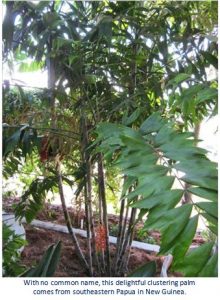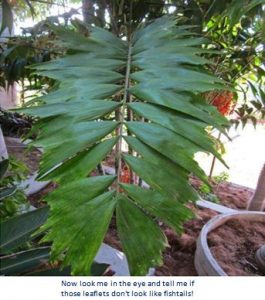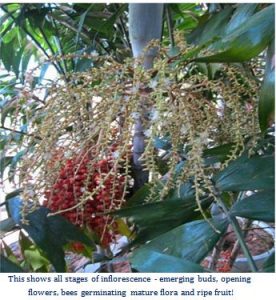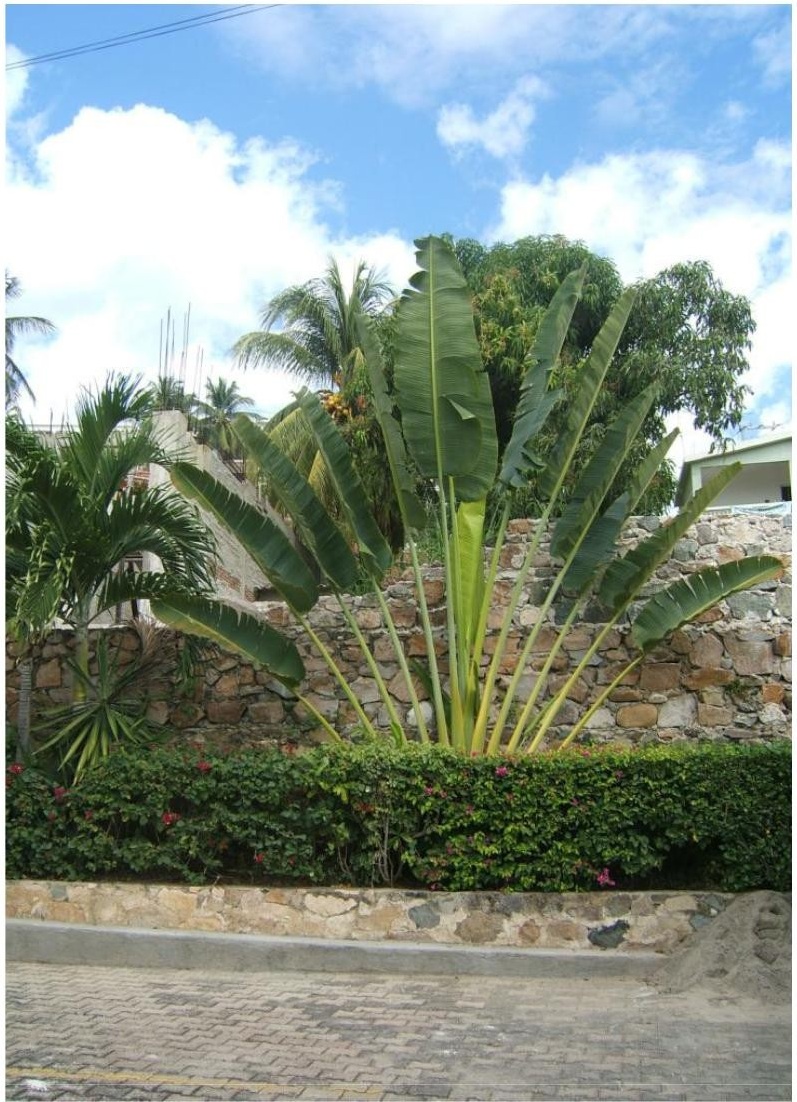By Tommy Clarkson from the March 2016 Edition
Ptychosperma furcatum No Common name
Family: Arecaceae
How embarrassing! Early on, for no little time, I told folks that this beauty was a Fishtail Palm. “Wrongo palm wine breath!”
In reality, this delightful clustering palm, from southeastern Papua in New Guinea, isn’t even in the Caryota family! So my gaffe’ was somewhat similar to introducing your Ulster born and raised, Irish cousin Sean O’Brien as Dylan Davies from Ammanford, Wales!
For correction of this mistake I wish to thank my pal, Dr. Felix Montez retired cardiologist, collector of palms from all around the world and owner of Tropical America outside of Puerto Vallarta.
Suffice it to say that I am more than a bit chagrined at this misidentification and incorrect information disseminated. I’ll salve my abraded ego with the recognition that there is substantive confusion even among the professionals as to the specific identification of this palm . . . . but, honestly, at least they have it in the correct genus. So I will simply have to console myself with the old saw that “To err is human” and the recognition that, accordingly, I am a superlative example of the species!
 Mea culpas complete, allow me to state that few are those who seem to have much of any awareness let alone specific information on the Ptychosperma furcatum. Extensive, studied perusal of volume after volume of my tropical plant and palm books netted little.
Mea culpas complete, allow me to state that few are those who seem to have much of any awareness let alone specific information on the Ptychosperma furcatum. Extensive, studied perusal of volume after volume of my tropical plant and palm books netted little.
Were it not for the botanical greats such as Robert Lee Riffle and Paul Craft regardless of the fact that two specimens happily grow on our International Terrace one might think this palm variety did not even exist!
In the broader context, the twenty-eight known pinnate-leaved, genus members both solitary trunked and clustering Ptychosperma come from a similar geographical locale to those fishtail palms, being native to the Caroline Islands, Moluccas, northern Australia, Solomon Islands and New Guinea. All like the wetlands, be they lowland swamps, rain forests of low mountain valleys.
Perhaps two of the most common and better known of this genus are the Solitary Palm (P. elegans) and the Macarthur Palm (P. macarthurii). The reason for my misidentification are those notched (or toothed leaflets.) Many of the Ptychosperma varieties even more than the eight members of the Caryota family of palms have leaflets that truly look like fish tails!
All members of the Ptyshosperma family have slender, ringed trunks with prominent crownshafts. The foliage of some emerge pinkish, maroon or bronze in color not, however, this one. Their round or ellipsoid fruits are orange red or black. Those of the P. furcatum are an almost reddish orange and produce in great quantities. All of these species readily hybridize if grown in the same locale which will really confuse ensuing botanists striving to identify them! (I feel their pain!)
Now, as to the Ptychosperma furcatum, it is a popular one of the many visitors touring Ola Brisa Gardens. And, in a modicum of support for my confusion, many voice their surprised observation of how very much the leaflets look like fishtail (a bit of vindication there!) That may well be expressed further in recognition that the epithet is Latin for “two pronged”, “forked”, “divided” or “cleft” something certainly seen upon examination of those leaflets!
And, in a modicum of support for my confusion, many voice their surprised observation of how very much the leaflets look like fishtail (a bit of vindication there!) That may well be expressed further in recognition that the epithet is Latin for “two pronged”, “forked”, “divided” or “cleft” something certainly seen upon examination of those leaflets!
Ours are of the clustering nature, but I have read that, supposedly, it can also be found in a solitary trunked form. H’mmmmmm, see preceding comment regarding hybridization. One wonders . . . .
By way of description of the P. furcatum, its stems reach heights around eighteen feet (5.5 meters) with a diameter up to two inches (5.1 cm). The one foot (.3 meters) tall crownheads bulge slightly at their bases. Leaf crowns are hemispherical with four to five foot (1.2 – 1.5 meters) long arching leaves atop petioles of one foot (.3 meters) or more. Those glossy, deep green wedge-shaped leaflets are unequally bifed (split) at their apices (tip) and regularly spaced. Its fruits are about one inch (2.5 cm) long.
Accordingly to Genera Palmarum, The Evolution and Classification of Palms published by the Kew Royal Botanic Gardens and the veritable “bible” of the International Palm Society, its uses by natives include, ”uses of the wood for bows, arrowheads and spears and the fruit of some species has been a poor substitute for betel nut.”
Lastly, the genus name is a combination of two Greek words “folded” and “seed” but given my track record and lack of explanatory documentation, I won’t venture into that!
For back issues of “Roots”, gardening tips, tropical plant book reviews and videos of numerous, highly unique eco adventure nature tours, as well as memorable “Ultimate Experiences” such as Tropical Garden
Brunches/ Visit us at.. www.olabrisagardens.com
Download the full edition or view it online
—
Tommy Clarkson is a bit of a renaissance man. He’s lived and worked in locales as disparate as the 1.2 square mile island of Kwajalein to war-torn Iraq, from aboard he and Patty’s boat berthed out of Sea Bright, NJ to Thailand, Germany, Hawaii and Viet Nam; He’s taught classes and courses on creative writing and mass communications from the elementary grades to graduate level; He’s spoken to a wide array of meetings, conferences and assemblages on topics as varied as Buddhism, strategic marketing and tropical plants; In the latter category he and Patty’s recently book, “The Civilized Jungle” – written for the lay gardener – has been heralded as “the best tropical plant book in the last ten years”; And, according to Trip Advisor, their spectacular tropical creation – Ola Brisa Gardens – is the “Number One Tour destination in Manzanillo”.





You must be logged in to post a comment.